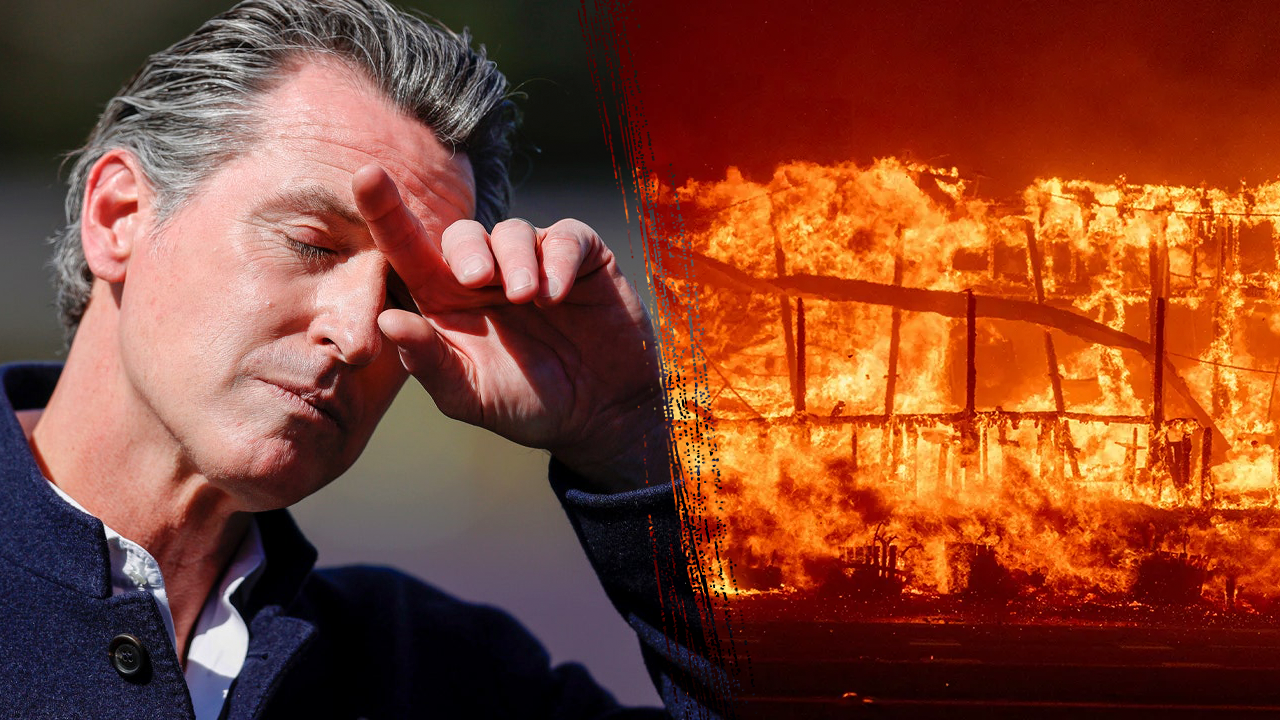Business
He claims to have saved California homeowners billions. The insurance industry hates him
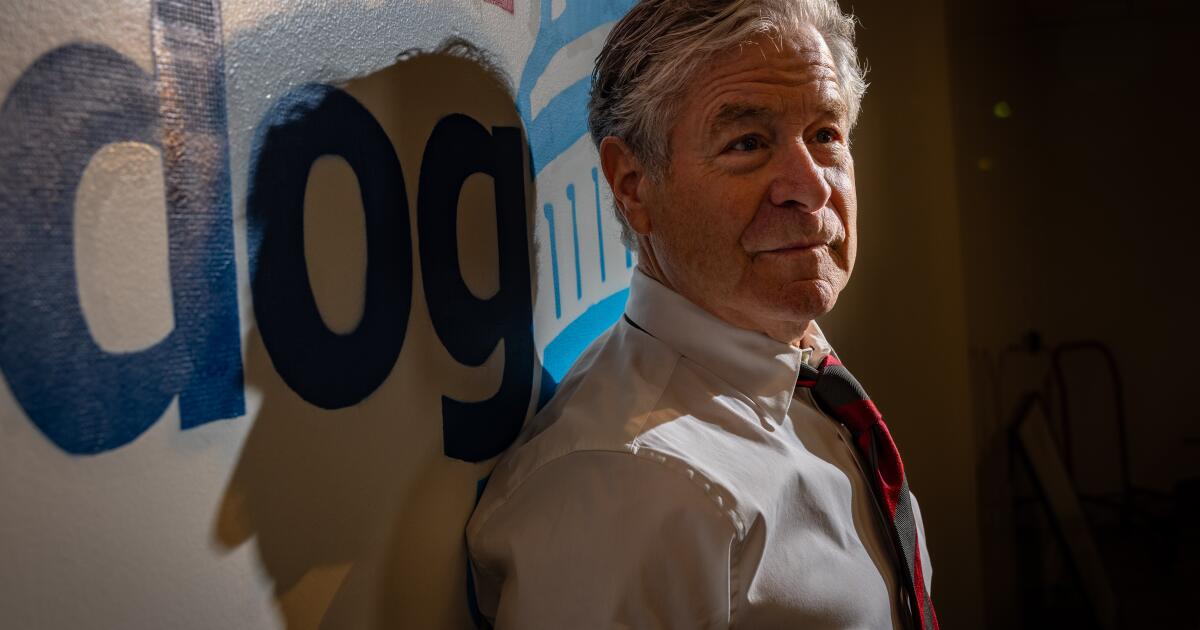
Insurance industry groups have called it a “bomb-throwing bogus advocacy” group, a “publicity-seeking, dark money front,” and an organization out to protect its own “financial $elf-interest$.”
These are the kinds of attacks that Harvey Rosenfield and Consumer Watchdog, the advocacy group he founded nearly 40 years ago, have come to expect.
But in the last year, as home insurers have stopped writing new policies and retreated from parts of the state prone to wildfire, a new voice has joined the ranks of critics who say Harvey and Co. are making things worse: California’s elected insurance commissioner, Ricardo Lara, whose office has called Consumer Watchdog an entrenched interest group “defending its own piggy bank.”
California Insurance Commissioner Ricardo Lara speaks at a state Capitol news conference in Sacramento.
(Rich Pedroncelli / Associated Press)
If attacking a public advocacy group seems like an odd stance for an elected official, it’s made even odder by the fact that Lara wouldn’t have his job if it weren’t for Consumer Watchdog.
To understand the beef, you need to understand Proposition 103, a California law governing the insurance industry.
The campaign for that ballot measure in 1988 was one of the first missions of Consumer Watchdog, which formed in the wake of Ralph Nader’s success in spurring new consumer regulation.
That proposition, which Rosenfield helped write, enacted some of the most stringent insurance industry regulation in the nation. First, it created the office of an elected insurance commissioner to head the state Department of Insurance. Any time an insurance company seeks to raise prices, Proposition 103 requires that the firm apply to the commissioner for prior approval.
The goal, according to the text of the act, is to provide transparency into the insurance market and prevent insurers from charging “excessive, inadequate or unfairly discriminatory” rates to policyholders.
Nearly 35 years after Proposition 103 went into effect, Californians pay less for auto and home insurance than most Americans, with the state ranking among the bottom half of states for prices in both categories. But insurers say that long processing times for rate increases, among other regulations, have made it difficult to do business in the state as inflation and wildfire risks are on the rise.
One specific criticism of Consumer Watchdog revolves around a unique proviso of Proposition 103. The law allows public groups such as Consumer Watchdog to intervene in an insurance company’s application for a rate increase and argue — alongside the Department of Insurance — for what the ultimate price should be.
When groups such as Consumer Watchdog intervene, Proposition 103 stipulates that they can get paid for their efforts. After paying the intervening groups, insurance companies wind up passing those fees along to consumers. Insurance companies argue that this provides Consumer Watchdog and others a perverse incentive to turn every rate filing into a battle in order to get paid their fees.
“No other state has this kind of public participation and scrutiny built into the regulatory process, which is why Prop 103 is their number one target,” Rosenfield said. “It drives them nuts.”
“It comes down to the money, right?” said Carmen Balber, Consumer Watchdog’s executive director. “Thanks to the intervenor process, consumers pay less for their home and auto insurance than they would otherwise, and the industry has sought to claw back those profits for decades now.”
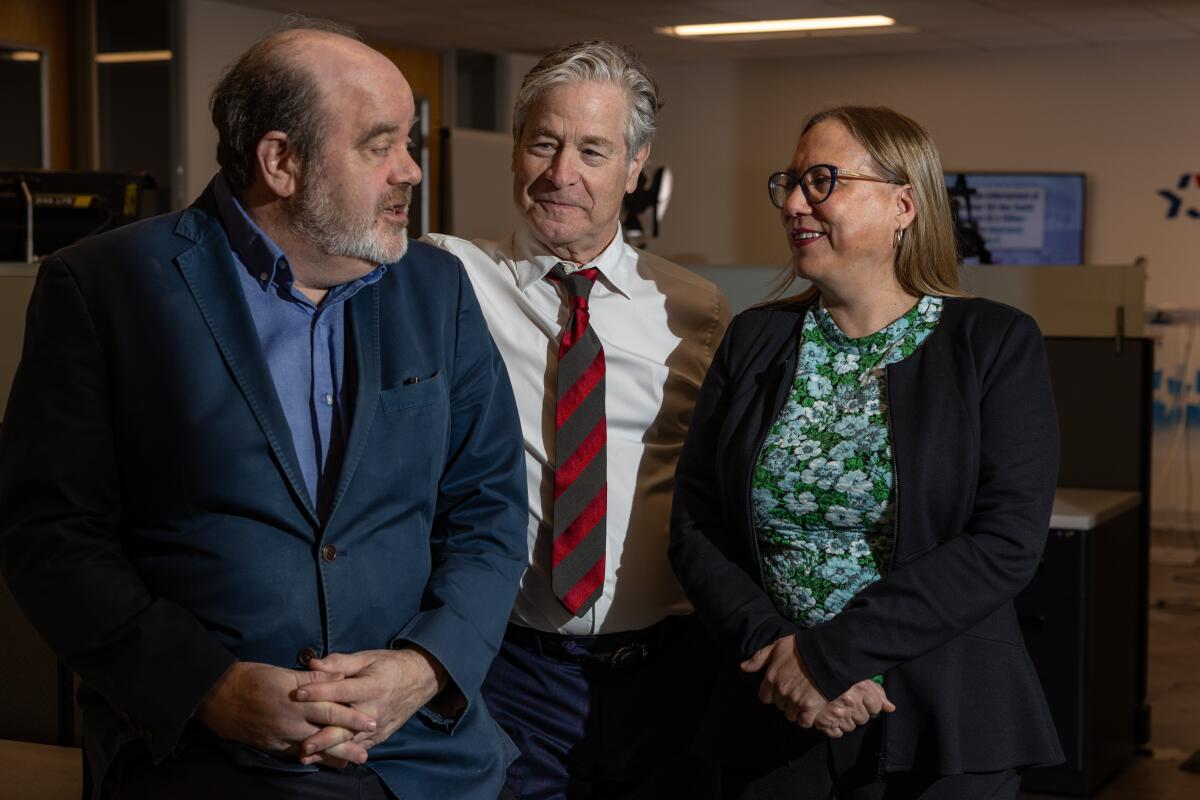
Consumer Watchdog’s Jamie Court, Harvey Rosenfield and Carmen Balber pose for a portrait in their Los Angeles offices Feb. 1.
(Jason Armond / Los Angeles Times)
There has been friction between the insurance industry and consumer groups for decades, but things have recently started to boil over.
The American Property Casualty Insurance Assn., the nation’s largest insurance lobbying group, bankrolled a new website attacking Consumer Watchdog in late 2023. Spokespeople for the Insurance Information Institute and the Personal Insurance Federation of California regularly opine to reporters that Rosenfield, Balber and the group’s president, Jamie Court, are wrenches in the underwriting machinery.
“The industry is going after Consumer Watchdog harder than normal,” said Brian Sullivan, owner and editor of insurance industry publication Risk Information. And the feud between the group and the Department of Insurance keeps escalating. “I have never seen the relationship degrade to the point it’s at now,” Sullivan said.
The industry groups have been pushing for changes in Sacramento and at the Department of Insurance — and at the close of last year’s legislative session, saw some results in the forms of promises to loosen regulations.
Lara, the state’s insurance commissioner, has had a rocky relationship with Consumer Watchdog from the start. After he pledged to not accept campaign funds from insurers in his first run for the office in 2018, a San Diego Union-Tribune investigation revealed that Lara had accepted hundreds of thousands of dollars in campaign contributions from people and companies with ties to the insurance industry. Consumer Watchdog filed a public records request for communications between Lara’s department and the insurance companies linked to the donations, and then sued the commissioner for allegedly failing to respond to the request in full. The group lost its initial lawsuit, but is continuing to fight it in the state Courts of Appeal.
Since then, the group has accused Lara’s office of ramming through rate increases without adequate review or opportunity for public input, and called his plans to change regulations with the goal of bringing more insurers back to the state market a “sham.”
Lara, in turn, noted in a news conference announcing his proposed reforms that “bombastic statements from entrenched interest groups” help no one, and that “one entity can unreasonably prolong rate filings” while “materially benefiting from a process that is meant for broader public participation.”
Michael Soller, Lara’s spokesperson with the department, has been less coy about the “entity” in question. After Consumer Watchdog accused Lara of striking a secret deal with insurance companies in the fall, Soller put out a statement saying that the group’s “cynical claims hide the truth that [it] has earned millions of dollars signing off on rate increases — while denying the reality that insurance has become impossible for some Californians to find at any price.” He added that the group “is turning a blind eye to consumers’ needs while defending its own insurance piggy bank.”
Yes, they’re a big pain, but that’s their job.
— Rep. John Garamendi, describing Consumer Watchdog
While other consumer groups such as United Policyholders and the Consumer Federation of California have taken a more measured approach, Rosenfield has been blunt. “A commissioner more disposed to protect the industry has come along,” Rosenfield said. “Ultimately, there’s accountability for that within our system of democracy.”
“He’s kind of out a little bit on his own on this in terms of opposing what Lara’s doing,” said Brian Sullivan of Risk Information.
Increasingly, Consumer Watchdog is one of the only consumer advocates even participating in the Proposition 103 process. In the early days of the regime, half a dozen or so major consumer groups were willing to enter the fray. But over time, the pool of dedicated groups with the resources to fight long regulatory battles and only get paid months (and sometimes years) after their work begins, has dwindled to a handful. Now state records show that 75% of the time, if there’s an intervening entity in a rate filing, it’s Consumer Watchdog.
This is where the accusation of self-interest comes to bear. Since Rosenfield helped write Proposition 103, he also wrote in the fee mechanism that pays his salary at Consumer Watchdog. According to critics, that amounts to self-dealing at the consumers’ expense.
State records show that over the last two decades, the group has been paid $11.6 million in fees by the state for its interventions in rate filings, or an average of $575,000 each year. Proposition 103 isn’t Consumer Watchdog’s only policy focus, nor is it the group’s only source of revenue. Consumer Watchdog brought in $3.75 million in revenue in 2022 from donations, grants and other sources, according to public filings.
For that $11.6 million Proposition 103 payout, the group has been party to saving consumers $5.51 billion in the last two decades, according to an analysis produced by Consumer Watchdog. In the last five years, Consumer Watchdog says its actions have contributed to $2.1 billion in savings for Californians. The group arrived at these figures by comparing the dollar value of rate increases that insurance companies sought in the last 22 years against the final amount they got when Consumer Watchdog challenged their request.
In the last two years, when Consumer Watchdog intervened in a company’s request to raise its rates, the final result for ratepayers ended up 38% lower than what the companies requested for home insurance, and 29% lower for auto insurance, on average. When Consumer Watchdog didn’t enter the fray, the final amount approved by the state insurance department was only 2-3% lower than what companies requested on average, according to the report.
Soller, the insurance department spokesperson, calls these numbers “deeply flawed.”
“Based on our review, their claims are highly inflated,” Soller wrote in a statement. “They compared the amount originally requested by the insurance company to the amount approved, with no accounting for what the department’s role was in that three-party negotiation.”
In other words, it is impossible to attribute all of those savings to the group’s intervention because state insurance regulators probably would have argued down the companies’ requests on its own.
But the scale of California’s insurance market means even small concessions can have a big effect on ratepayers. If Consumer Watchdog’s interventions contributed 0.3% of those $5.2 billion that insurance rates have been pushed downward, then the group has saved Californians millions more than it’s been paid in fees.
Rep. John Garamendi (D-Walnut Grove), who served as the state’s first and fourth elected insurance commissioner, finds the attempts to discredit Consumer Watchdog disturbing, if not surprising.
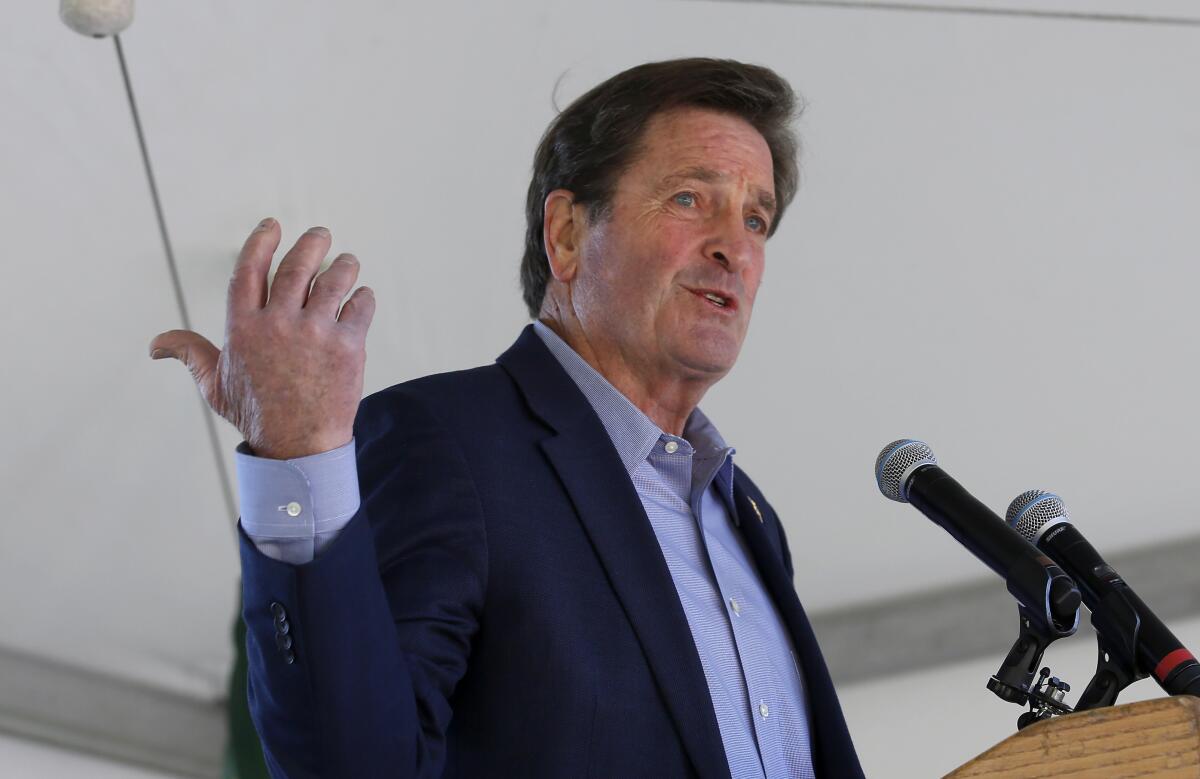
Rep. John Garamendi speaks at a meeting in South Lake Tahoe, Calif., in August 2019.
(Rich Pedroncelli / Associated Press)
“Yes, they’re a big pain, but that’s their job,” Garamendi said. “These organizations are absolutely essential in the process of a rational insurance market, with premiums that are fairly priced, policies that are clearly understood and written, claims that are paid.”
Sullivan, for his part, believes that the hate focused on Harvey and Consumer Watchdog is more of a sideshow than a debate about how to respond to the changing insurance market.
“It has nothing to do with the problems in the state,” Sullivan said. “They’re fighting amongst themselves over very little — it isn’t the intervenor process causing the long delay times” that are at the root of the industry’s problems with the regulatory system.
The fundamental problem, according to industry groups and observers, is that rate filings often take a year or more to work their way through the system, which can lead to a punishing lag between costs and revenues for insurers.
Many insurers are still limiting the number of new policies they write in California. If changes do come, it would take many months, and probably years, before they could ripple through to policies and change insurers’ business decisions about operating in the state.
Commissioner Lara is hiring more staff and changing filing rules with the goal of speeding up the process. His office also plans to roll out new rules that could allow insurance companies to lock in higher prices further in advance, by allowing them to use algorithmic modeling to set higher prices for wildfire risk zones and pass through some of the costs of reinsurance — insurance policies that insurance companies themselves buy to cover their own losses.
Consumer Watchdog, in a surprise to no one, has some strong opinions about Lara’s plans.

Business
Scott Bessent, Trump’s Billionaire Treasury Pick, Will Shed Assets to Avoid Conflicts

Scott Bessent, the billionaire hedge fund manager whom President-elect Donald J. Trump picked to be his Treasury secretary, plans to divest from dozens of funds, trusts and investments in preparation to become the nation’s top economic policymaker.
Those plans were released on Saturday along with the publication of an ethics agreement and financial disclosures that Mr. Bessent submitted ahead of his Senate confirmation hearing next Thursday.
The documents show the extent of the wealth of Mr. Bessent, whose assets and investments appear to be worth in excess of $700 million. Mr. Bessent was formerly the top investor for the billionaire liberal philanthropist George Soros and has been a major Republican donor and adviser to Mr. Trump.
If confirmed as Treasury secretary, Mr. Bessent, 62, will steer Mr. Trump’s economic agenda of cutting taxes, rolling back regulations and imposing tariffs as he seeks to renegotiate trade deals. He will also play a central role in the Trump administration’s expected embrace of cryptocurrencies such as Bitcoin.
Although Mr. Trump won the election by appealing to working-class voters who have been dogged by high prices, he has turned to wealthy Wall Street investors such as Mr. Bessent and Howard Lutnick, a billionaire banker whom he tapped to be commerce secretary, to lead his economic team. Linda McMahon, another billionaire, has been picked as education secretary, and Elon Musk, the world’s richest man, is leading an unofficial agency known as the Department of Government Efficiency.
In a letter to the Treasury Department’s ethics office, Mr. Bessent outlined the steps he would take to “avoid any actual or apparent conflict of interest in the event that I am confirmed for the position of secretary of the Department of Treasury.”
Mr. Bessent said he would shutter Key Square Capital Management, the investment firm that he founded, and resign from his Bessent-Freeman Family Foundation and from Rockefeller University, where he has been chairman of the investment committee.
The financial disclosure form, which provides ranges for the value of his assets, reveals that Mr. Bessent owns as much as $25 million of farmland in North Dakota, which earns an income from soybean and corn production. He also owns a property in the Bahamas that is worth as much as $25 million. Last November, Mr. Bessent put his historic pink mansion in Charleston, S.C., on the market for $22.5 million.
Mr. Bessent is selling several investments that could pose potential conflicts of interest including a Bitcoin exchange-traded fund; an account that trades the renminbi, China’s currency; and his stake in All Seasons, a conservative publisher. He also has a margin loan, or line of credit, with Goldman Sachs of more than $50 million.
As an investor, Mr. Bessent has long wagered on the rising strength of the dollar and has betted against, or “shorted,” the renminbi, according to a person familiar with Mr. Bessent’s strategy who spoke on condition of anonymity to discuss his portfolio. Mr. Bessent gained notoriety in the 1990s by betting against the British pound and earning his firm, Soros Fund Management, $1 billion. He also made a high-profile bet against the Japanese yen.
Mr. Bessent, who will be overseeing the U.S. Treasury market, holds over $100 million in Treasury bills.
Cabinet officials are required to divest certain holdings and investments to avoid the potential for conflicts of interest. Although this can be an onerous process, it has some potential tax benefits.
The tax code contains a provision that allows securities to be sold and the capital gains tax on such sales deferred if the full proceeds are used to buy Treasury securities and certain money-market funds. The tax continues to be deferred until the securities or money-market funds are sold.
Even while adhering to the ethics guidelines, questions about conflicts of interest can still emerge.
Mr. Trump’s Treasury secretary during his first term, Steven Mnuchin, divested from his Hollywood film production company after joining the administration. However, as he was negotiating a trade deal in 2018 with China — an important market for the U.S. film industry — ethics watchdogs raised questions about whether Mr. Mnuchin had conflicts because he had sold his interest in the company to his wife.
Mr. Bessent was chosen for the Treasury after an internal tussle among Mr. Trump’s aides over the job. Mr. Lutnick, Mr. Trump’s transition team co-chair and the chief executive of Cantor Fitzgerald, made a late pitch to secure the Treasury secretary role for himself before Mr. Trump picked him to be Commerce secretary.
During that fight, which spilled into view, critics of Mr. Bessent circulated documents disparaging his performance as a hedge fund manager.
Mr. Bessent’s most recent hedge fund, Key Square Capital, launched to much fanfare in 2016, garnering $4.5 billion in investor money, including $2 billion from Mr. Soros, but manages much less now. A fund he ran in the early 2000s had a similarly unremarkable performance.
Business
As wildfires rage, private firefighters join the fight for the fortunate few
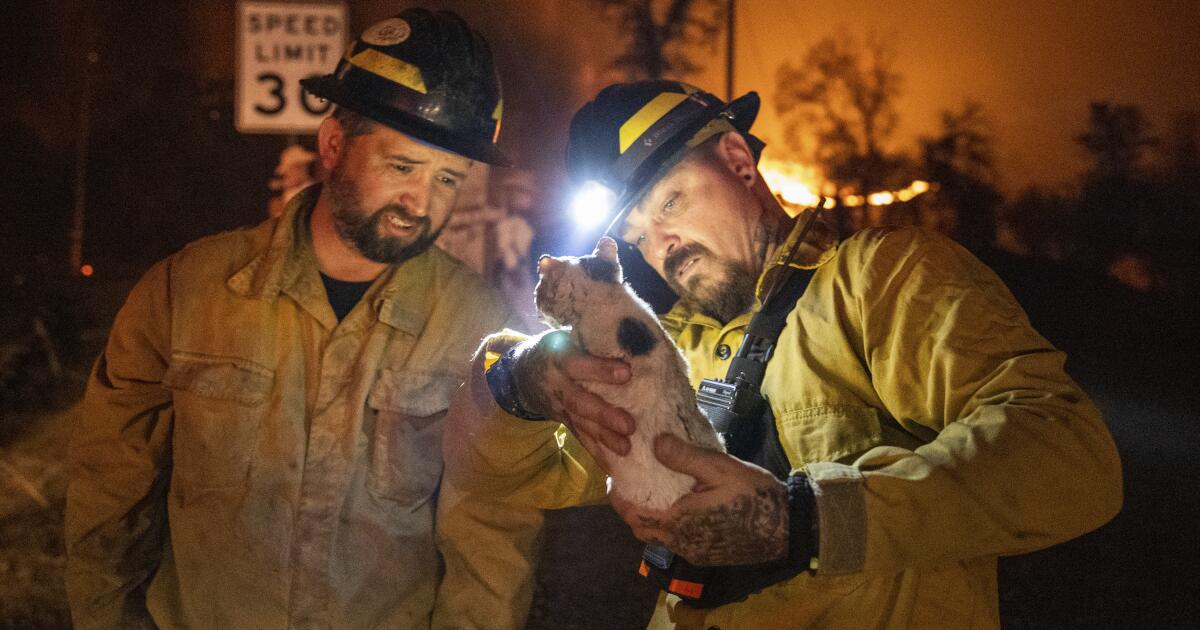
When devastating wildfires erupted across Los Angeles County this week, David Torgerson’s team of firefighters went to work.
The thousands of city, county and state firefighters dispatched to battle the blazes went wherever they were needed. The crews from Torgerson’s Wildfire Defense Systems, however, set out for particular addresses. Armed with hoses, fire-blocking gel and their own water supply, the Montana-based outfit contracts with insurance companies to defend the homes of customers who buy policies that include their services.
It’s a win-win if the private firefighters succeed in saving a home, said Torgerson, the company’s founder and executive chairman. The homeowner keeps their home and the insurance company doesn’t have to make a hefty payout to rebuild.
“It makes good sense,” he said. “It’s always better if the homes and businesses don’t burn.”
Torgerson’s operation, which has been contracting with insurance companies since 2008 and employs hundreds of firefighters, engineers and other staff, highlights a lesser-known component of fighting wildfires in the U.S. Along with the more than 7,500 publicly funded firefighters and emergency personnel dispatched to the current conflagrations, which have burned more than 30,000 acres and destroyed more than 9,000 structures, a smaller force of for-hire professionals is on the fire lines for insurance companies, wealthy individual property owners or government agencies in need of additional hands.
Their presence isn’t without controversy. Private firefighters hired by homeowners directly have drawn criticism for heightening class divides during disasters. This week, a Pacific Palisades homeowner received backlash for putting a call out on X, the social media site formerly named Twitter, for help finding private firefighters who could save his home.
“Does anyone have access to private firefighters to protect our home in Pacific Palisades? Need to act fast here. All neighbors houses burning,” he wrote in the since-deleted post. “Will pay any amount.”
“The epitome of nerve and tone deaf!” someone replied.
In 2018, Kim Kardashian and Kanye West credited private firefighters for saving their $60-million home in the Santa Monica mountains during a wildfire. But those who serve wealthy clients make up only a small fraction of nonpublic firefighters, according to Torgerson.
“Contract firefighters who are hired by the government are the vast majority,” he said. The federal government has been hiring private firefighters since the 1980s to support its own forces. According to the National Wildfire Suppression Assn., there are about 250 private sector fire response companies under federal contract, adding about 10,000 firefighters to U.S. efforts.
Some private firefighting companies, including Wildfire Defense Systems, are known as Qualified Insurance Resources and are paid by insurance companies to protect the homes of their customers. Wildfire Defense Systems refers to its on-the-ground forces as private sector wildfire personnel.
Wildfire Defense Systems only works with the insurance industry, but other privately held firefighting companies contract with industrial clients such as petrochemical facilities and utility providers. Wildfire Defense Systems declined to disclose company revenue or what it charges for its services.
Allied Disaster Defense, a company that has sent personnel to the fires in Los Angeles, offers services to both property owners and insurance companies. Its website says its services will “enhance the insurability of properties” and “contribute to reduced claims.”
The website also has a page dedicated to services for private clients, which include emergency response and assistance with insurance claims for “high net-worth and celebrity” customers. The company does not list prices for its services and has nondisclosure agreements with its private clients.
Several other private firefighting companies are based in California, including Mt. Adams Wildfire, which contracts with government agencies, and UrbnTek, which serves Los Angeles, Orange County and San Diego among other areas. Along with spraying fire retardant on trees and brush to stop an advancing fire, the company offers “a double layer of protection by wrapping a structure with our fire blanket system.”
Torgerson, a civil engineer with 34 years in emergency services, said he has been struck by the speed of the current wildfires. While typically it takes two to 10 minutes for a fire to sweep through a home, he said, the Palisades fire is traveling at higher speeds.
“It’s moving so fast, it’ll likely take one to two minutes for these fires to pass over the properties,” he said.
He said his company responded to all 62 of the wildfires that threatened structures in California in 2024 and didn’t lose a property.
Business
As Delta Reports Profits, Airlines Are Optimistic About 2025

This year just got started, but it is already shaping up nicely for U.S. airlines.
After several setbacks, the industry ended 2024 in a fairly strong position because of healthy demand for tickets and the ability of several airlines to control costs and raise fares, experts said. Barring any big problems, airlines — especially the largest ones — should enjoy a great year, analysts said.
“I think it’s going to be pretty blue skies,” said Tom Fitzgerald, an airline industry analyst for the investment bank TD Cowen.
In recent weeks, many major airlines upgraded forecasts for the all-important last three months of the year. And on Friday, Delta Air Lines said it collected more than $15.5 billion in revenue in the fourth quarter of 2024, a record.
“As we move into 2025, we expect strong demand for travel to continue,” Delta’s chief executive, Ed Bastian, said in a statement. That put the airline on track to “deliver the best financial year in Delta’s 100-year history,” he said.
The airline also beat analysts’ profit estimates and said it expected earnings per share, a measure of profitability, to rise more than 10 percent this year.
Delta’s upbeat report offers a preview of what are expected to be similarly rosy updates from other carriers that will report earnings in the next few weeks. That should come as welcome news to an industry that has been stifled by various challenges even as demand for travel has rocketed back after the pandemic.
“For the last five years, it’s felt like every bird in the sky was a black swan,” said Ravi Shanker, an analyst focused on airlines at Morgan Stanley. “But it appears that this industry does have its ducks in a row.”
That is, of course, if everything goes according to plan, which it rarely does. Geopolitics, terrorist attacks, air safety problems and, perhaps most important, an economic downturn could tank demand for travel. Rising costs, particularly for jet fuel, could erode profits. Or the industry could face problems like a supply chain disruption that limits availability of new planes or makes it harder to repair older ones.
Early last year, a panel blew off a Boeing 737 Max during an Alaska Airlines flight, resurfacing concerns about the safety of the manufacturer’s planes, which are used on most flights operated by U.S. airlines, according to Cirium, an aviation data firm.
The incident forced Boeing to slow production and delay deliveries of jets. That disrupted the plans of some airlines that had hoped to carry more passengers. And there was little airlines could do to adjust because the world’s largest jet manufacturer, Airbus, didn’t have the capacity to pick up the slack — both it and Boeing have long order backlogs. In addition, some Airbus planes were afflicted by an engine problem that has forced carriers to pull the jets out of service for inspections.
There was other tumult, too. Spirit Airlines filed for bankruptcy. A brief technology outage wreaked havoc on many airlines, disrupting travel and resulting in thousands of canceled flights in the heart of the busy summer season. And during the summer, smaller airlines flooded popular domestic routes with seats, squeezing profits during what is normally the most lucrative time of year.
But the industry’s financial position started improving when airlines reduced the number of flights and seats. While that was bad for travelers, it lifted fares and profits for airlines.
“You’re in a demand-over-supply imbalance, which gives the industry pricing power,” said Andrew Didora, an analyst at the Bank of America.
At the same time, airlines have been trying to improve their businesses. American Airlines overhauled a sales strategy that had frustrated corporate customers, helping it win back some travelers. Southwest Airlines made changes aimed at lowering costs and increasing profits after a push by the hedge fund Elliott Management. And JetBlue Airways unveiled a strategy with similar aims, after a less contentious battle with the investor Carl C. Icahn.
Those improvements and industry trends, along with the stabilization of fuel, labor and other costs, have created the conditions for what could be a banner 2025. “All of this is the best setup we’ve had in decades,” Mr. Shanker said.
That won’t materialize right away, though. Travel demand tends to be subdued in the winter. But business trips pick up somewhat, driven by events like this week’s Consumer Electronics Show in Las Vegas.
The positive outlook for 2025 is probably strongest for the largest U.S. airlines — Delta, United and American. All three are well positioned to take advantage of buoyant trends, including steadily rebounding business travel and customers who are eager to spend more on better seats and international flights.
But some smaller airlines may do well, too. JetBlue, Alaska Airlines and others have been adding more premium seats, which should help lift profits.
While he is optimistic overall, Mr. Shanker acknowledged that the industry was vulnerable to a host of potential problems.
“I mean, this time last year you were talking about doors falling off planes,” he said. “So who knows what might happen.”
-

 Politics1 week ago
Politics1 week agoNew Orleans attacker had 'remote detonator' for explosives in French Quarter, Biden says
-
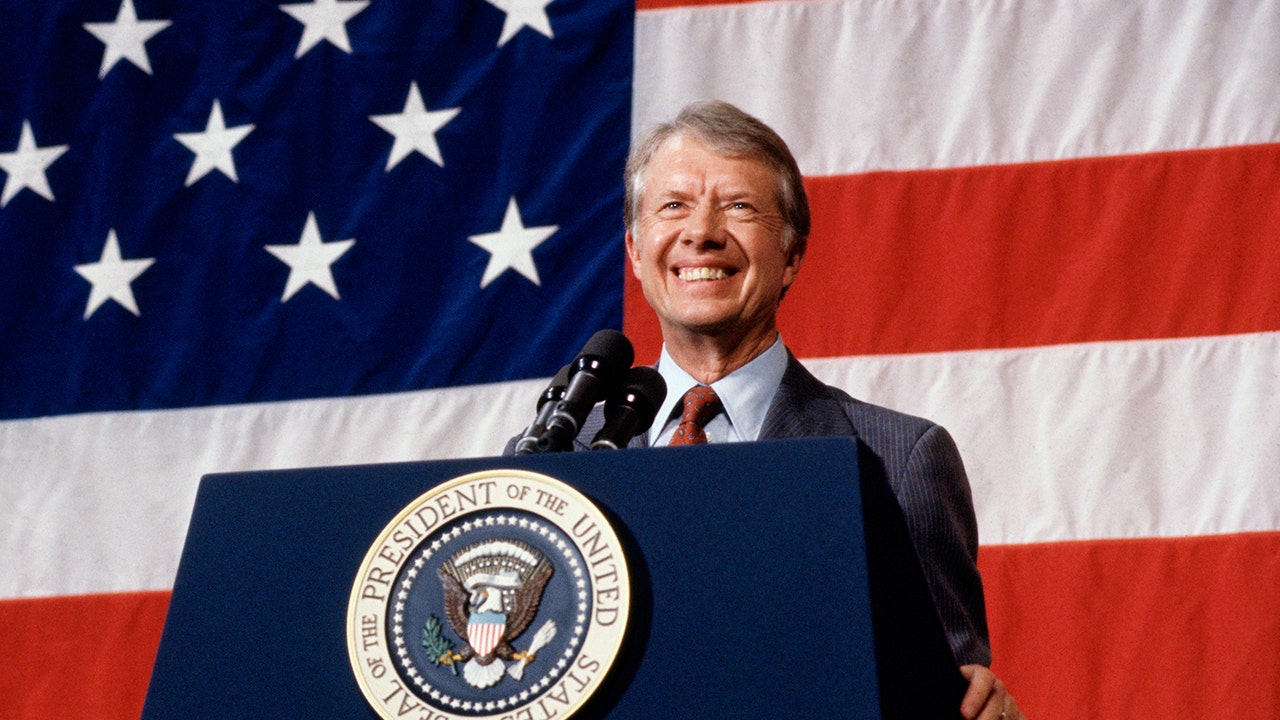
 Politics1 week ago
Politics1 week agoCarter's judicial picks reshaped the federal bench across the country
-

 Politics1 week ago
Politics1 week agoWho Are the Recipients of the Presidential Medal of Freedom?
-

 Health6 days ago
Health6 days agoOzempic ‘microdosing’ is the new weight-loss trend: Should you try it?
-

 World1 week ago
World1 week agoSouth Korea extends Boeing 737-800 inspections as Jeju Air wreckage lifted
-
/cdn.vox-cdn.com/uploads/chorus_asset/file/25822586/STK169_ZUCKERBERG_MAGA_STKS491_CVIRGINIA_A.jpg)
/cdn.vox-cdn.com/uploads/chorus_asset/file/25822586/STK169_ZUCKERBERG_MAGA_STKS491_CVIRGINIA_A.jpg) Technology3 days ago
Technology3 days agoMeta is highlighting a splintering global approach to online speech
-
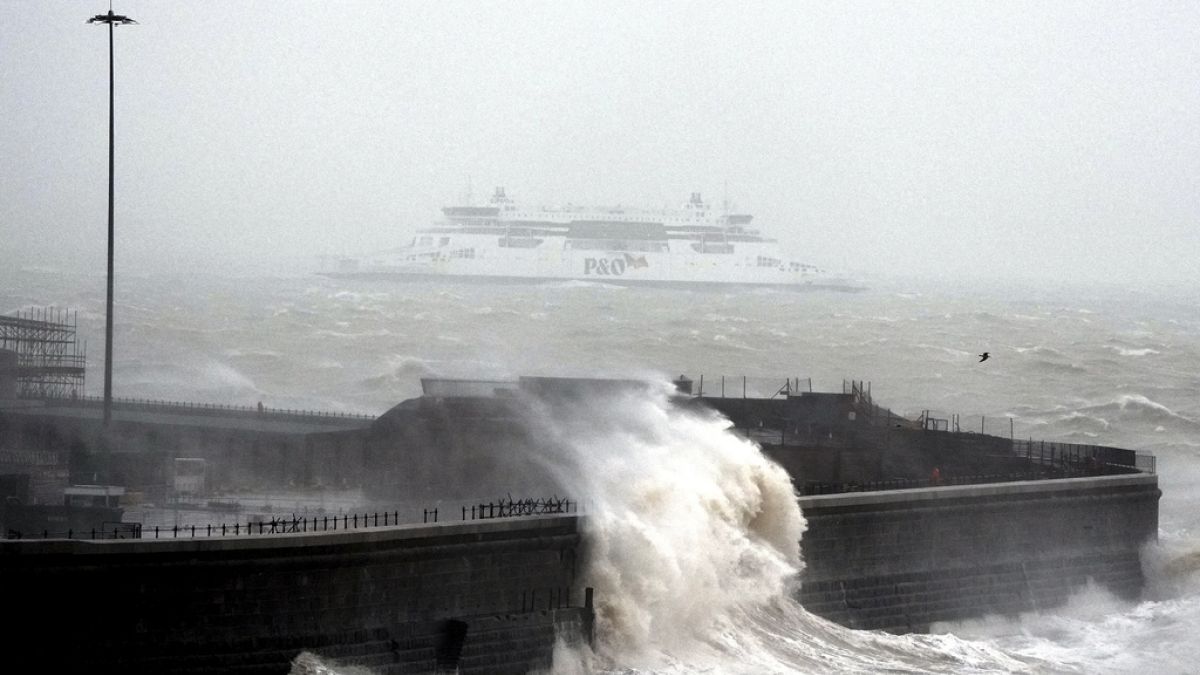
 World1 week ago
World1 week agoWeather warnings as freezing temperatures hit United Kingdom
-

 News1 week ago
News1 week agoSeeking to heal the country, Jimmy Carter pardoned men who evaded the Vietnam War draft












